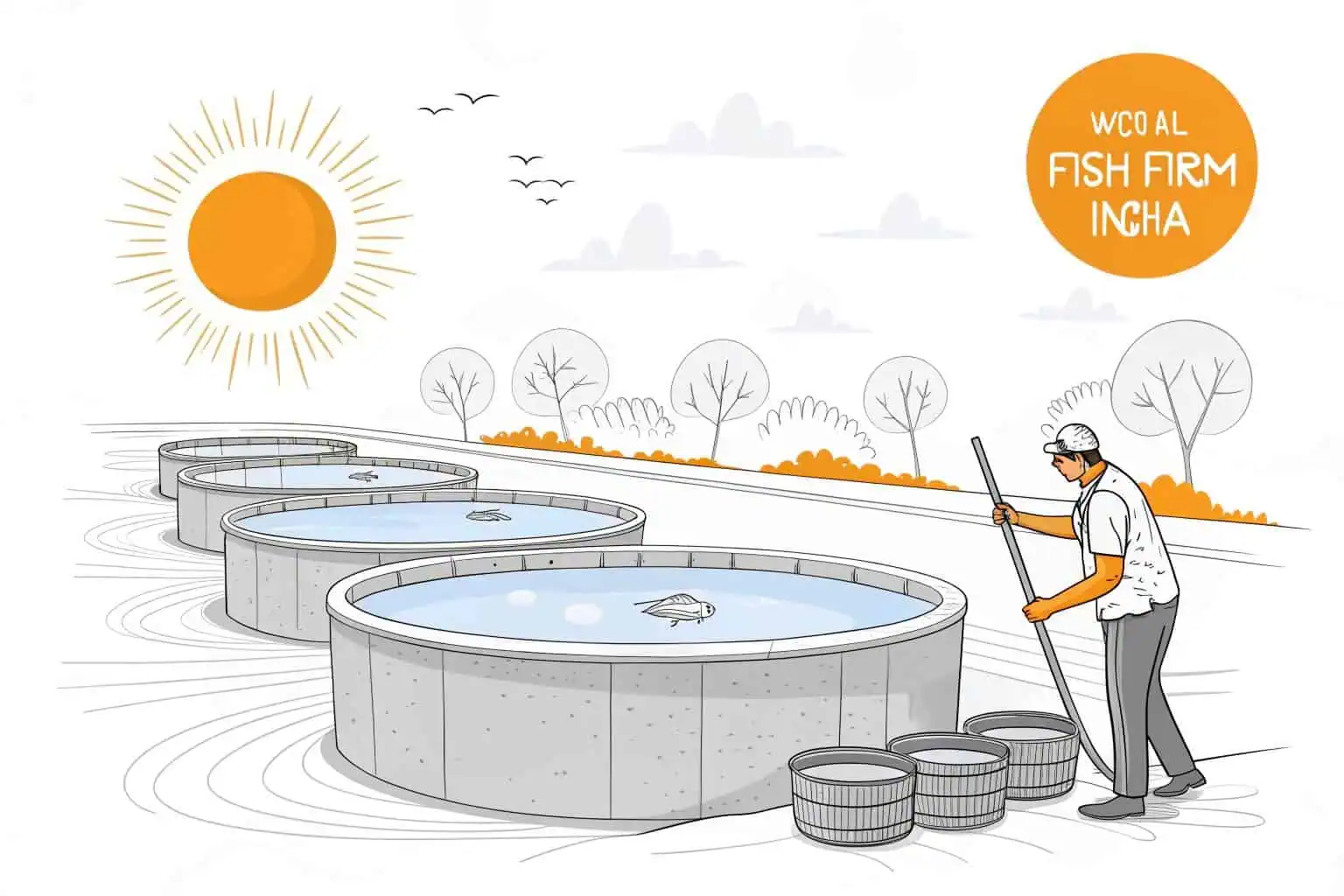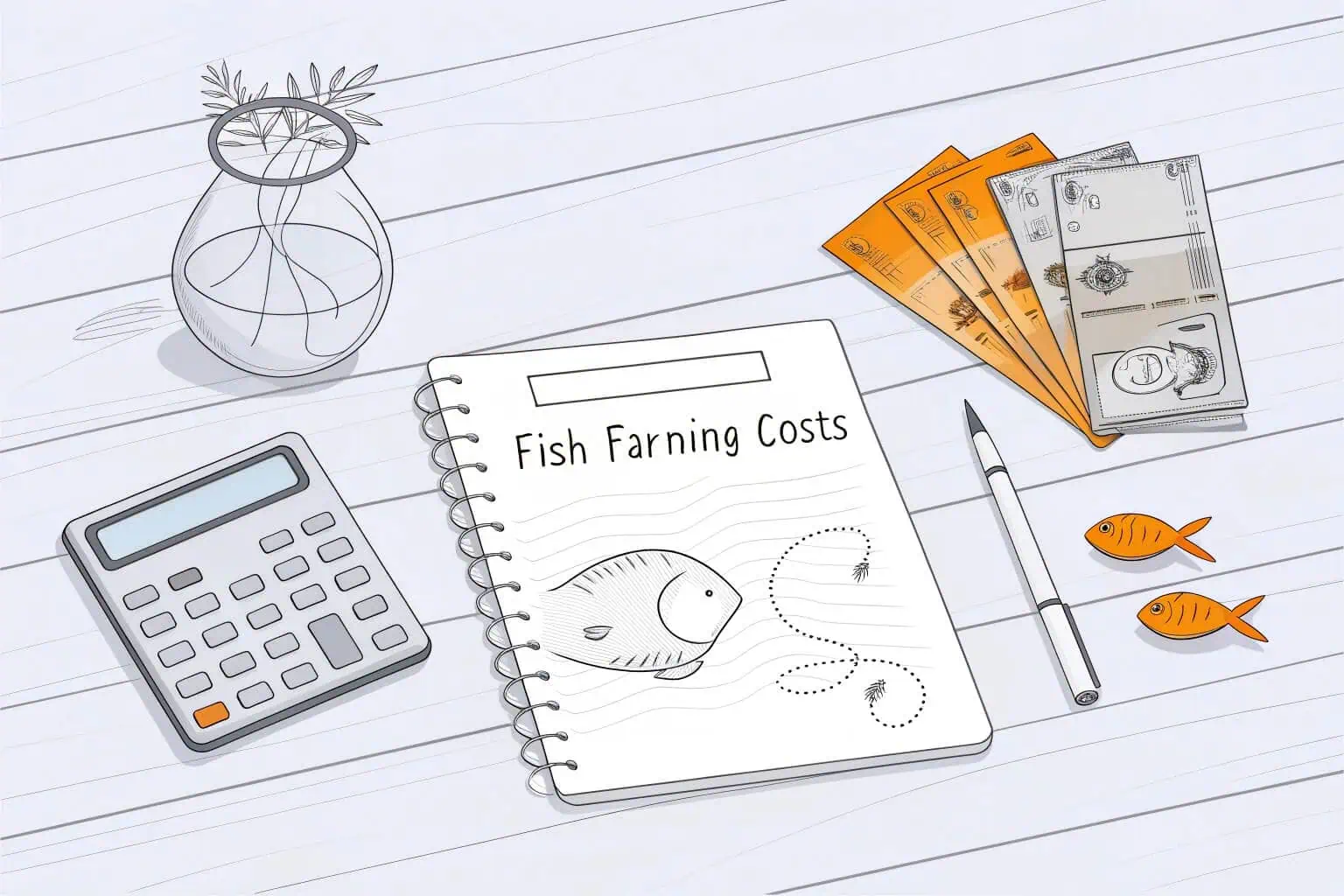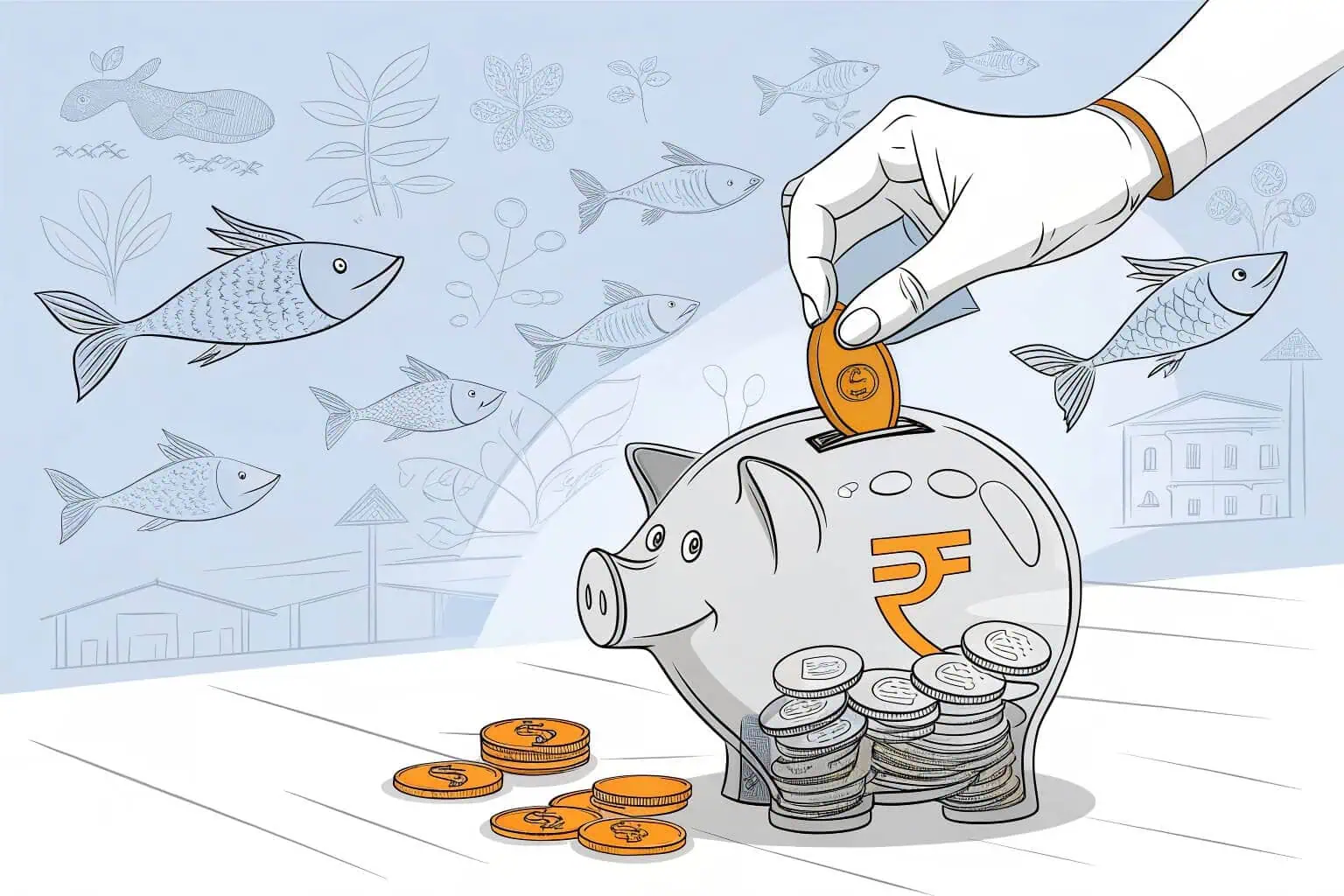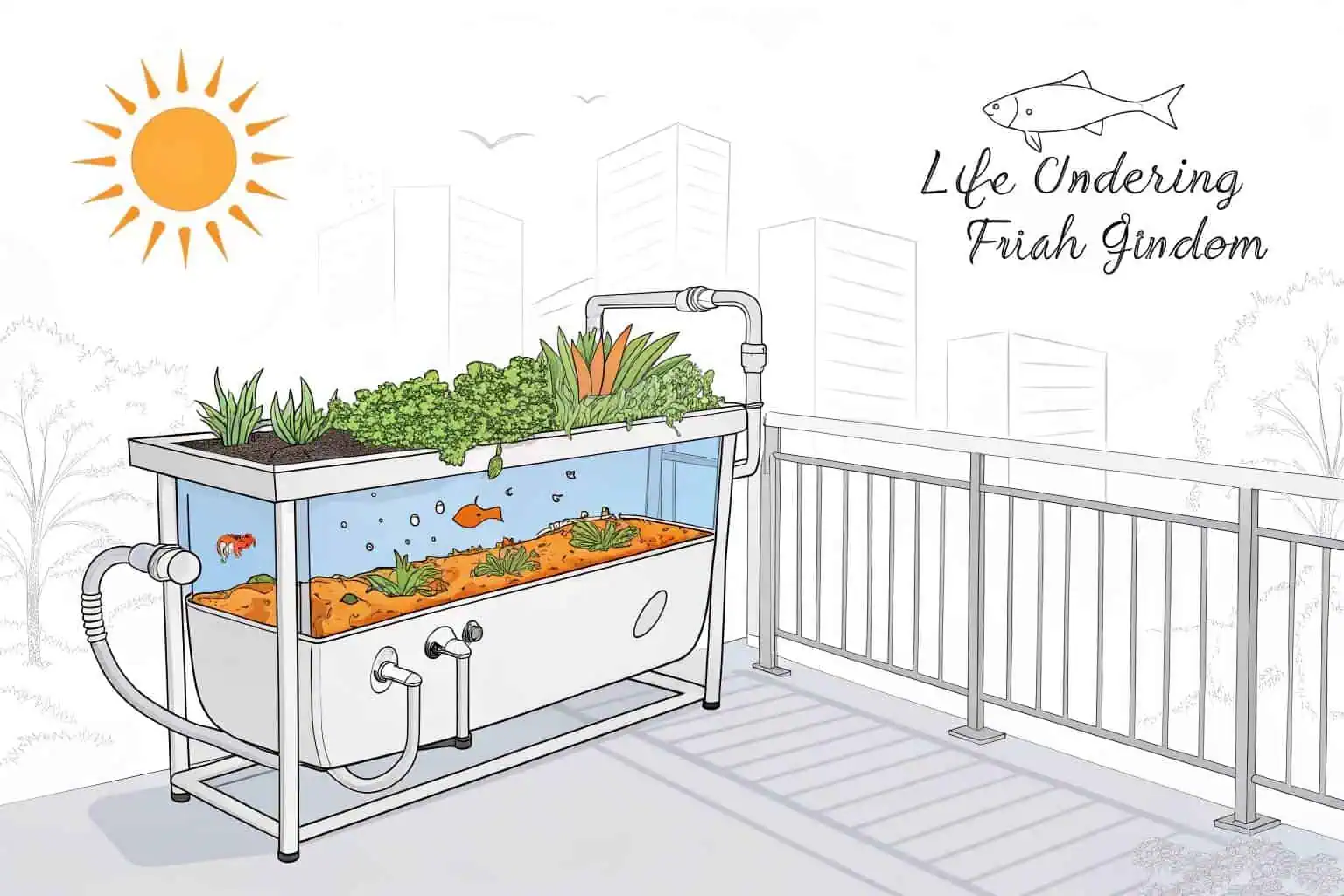How to start fish farming in India?
Lost on how to begin when thinking about starting a fish farm? It can seem like a huge undertaking with many unknowns. This guide will walk you through the essential steps to get started.
To start fish farming in India, you need to choose your farming method, secure a suitable location, obtain the necessary licenses, and source quality fish seeds. Success depends on careful planning of your budget, effective management, and understanding the market for your chosen fish species.

I've been looking into the fish farming industry for a while now, and I see incredible potential here in India. The growing demand for healthy food makes it a promising field. But I also know that getting started requires careful thought and planning. Now that you have a basic overview, let's dive into the details, beginning with one of the most critical questions: the cost.
How much does it cost to start fish farming in India?
Are you worried that the cost of starting a fish farm is too high? It’s a common concern that can stop a great idea in its tracks. But the truth is, the cost can be flexible depending on your approach.
The cost to start fish farming in India varies widely. A small, home-based setup might only require ₹25,000 to ₹50,000. However, a commercial-scale farm can range from ₹5 lakhs to over ₹50 lakhs, depending on the size, technology, and fish species you choose.

When I first started exploring this, the potential costs seemed overwhelming. But after breaking them down, I realized it's more manageable than it appears. The key is to understand where the money goes. There are initial, one-time costs and then ongoing operational expenses1. A clear budget is your best friend in this journey. It helps you plan effectively and avoid surprises down the road. Let's look closer at what these costs involve.
Breakdown of Initial Costs
The first expenses you'll face are for setting up the farm. This includes leasing or buying land and constructing the ponds. Then you need to purchase quality fish seeds2 or fingerlings. Equipment is another major component, which includes things like aerators to supply oxygen, nets for harvesting, and water testing kits. These initial investments form the foundation of your farm, so it's important to invest wisely without overspending. I learned that starting with good quality basics pays off in the long run.
Variable vs. Fixed Costs
Once your farm is set up, you'll have ongoing costs. It's helpful to separate these into fixed and variable categories. Fixed costs don't change much, like rent or loan payments. Variable costs, on the other hand, fluctuate. The biggest variable cost is usually fish feed. Others include electricity for pumps, labor, and healthcare for the fish. Understanding this difference helped me create a much more accurate financial plan.
| Cost Type | Examples | Description |
|---|---|---|
| Fixed Costs3 | Land Lease, Equipment Depreciation, Salaries | These costs remain stable regardless of production levels. |
| Variable Costs4 | Fish Feed, Electricity, Fingerlings, Medicine | These costs change based on how many fish you are raising. |
Government Support Can Help
One of the most encouraging things I discovered is the amount of government support available. Schemes like the Pradhan Mantri Matsya Sampada Yojana (PMMSY)5 and loans from NABARD can provide subsidies and financial assistance. This support can significantly lower your initial investment burden. I strongly recommend anyone starting out to research these programs. It can make the difference between your project being a dream and it becoming a reality.
Is fish farming profitable in India?
After considering the costs, you're probably wondering if it's all worth it. Can you actually make good money from fish farming? It’s a fair question, as profit is the ultimate goal for any business.
Yes, fish farming is a very profitable business in India if you manage it correctly. Your profit depends on the fish species you raise, current market demand, your operational efficiency, and the scale of your farm. Many farmers achieve a high return on investment.

From my research and conversations with people in the industry, the profit potential is real. I've seen how a well-run farm can turn into a thriving business6. It’s not a get-rich-quick scheme; it requires hard work, knowledge, and patience. But for those who are committed, the financial rewards can be substantial. The key is to focus on the factors that directly impact your bottom line. Let's explore what those are.
Factors That Affect Your Profit
Your choice of fish is one of the biggest factors. High-demand species like Rohu, Catla, and Catfish are popular choices. Some farmers opt for higher-value species like shrimp or tilapia, which can fetch better prices but may require more expertise. Another factor is the Feed Conversion Ratio (FCR)7, which measures how efficiently your fish convert feed into body mass. A lower FCR means lower feed costs and higher profits. Finally, managing your operational costs and minimizing fish mortality are crucial for a healthy profit margin.
A Quick Look at Potential Earnings
To make it more concrete, I put together a simple calculation. This is just an example, and your actual numbers will vary. But it shows the potential. Let's say you invest in a medium-sized pond8.
| Item | Cost (INR) | Revenue (INR) |
|---|---|---|
| Initial Setup Cost | 5,00,000 | 0 |
| Annual Operating Cost | 2,00,000 | 0 |
| Annual Harvest (5,000 kg @ ₹150/kg) | 0 | 7,50,000 |
| Annual Gross Profit9 | 0 | 5,50,000 |
This simple table shows that even after covering your annual costs, the revenue can be quite significant. Over time, as you pay off your initial investment, the net profit becomes even more attractive.
How to Reduce Risks
Every business has risks, and fish farming is no exception. Disease outbreaks can be devastating, and market prices can fluctuate. However, you can take steps to manage these risks. I learned that regular water quality monitoring10 and proper biosecurity measures can prevent most diseases. Diversifying your fish species can protect you from price drops in a single market. Getting your farm insured is another smart move that provides a safety net against unforeseen events.
How much money do I need to start a fish farm?
So, we've talked about costs and profits, but how much cash do you actually need in hand to start? This is often the biggest hurdle for aspiring entrepreneurs. Let's break down the starting capital you'll need.
You need enough money to cover your initial setup costs and the operational expenses for at least one full production cycle. For a small-scale farm, having ₹1 lakh to ₹3 lakhs is a good starting point. For a larger commercial farm, you should plan for at least ₹10 lakhs.

When I was creating my own plan, I realized that having a financial buffer is just as important as the initial investment itself. Unexpected costs will come up, and having extra funds prevents your project from stalling. The exact amount you need depends entirely on your vision. Are you starting a small backyard project or a large commercial enterprise? Answering that question is the first step to figuring out your capital needs11.
How to Fund Your Fish Farm
Where can you get the money? The most common source is personal savings12. This is the simplest way, as you don't have to answer to anyone. However, not everyone has enough savings. Bank loans are another great option. Many banks in India offer loans specifically for agricultural projects, including fish farming. And as I mentioned earlier, government schemes like the PMMSY are designed to help new farmers get started. I found that a combination of savings and a small loan is often the most practical approach.
The Importance of a Business Plan
If you plan to seek a loan or attract investors, a solid business plan is non-negotiable. I spent a lot of time developing mine, and it was worth the effort. Your business plan is your roadmap. It should include an executive summary, a detailed market analysis, your operational plan, and, most importantly, your financial projections13. It shows lenders that you have thought through every aspect of the business and are a safe investment. It also forces you to think critically about your own strategy.
Starting Small vs. Going Big
I debated whether to start small or try to get a large investment from the beginning. Both have their pros and cons. Starting small, or bootstrapping, means less risk and more control. You learn the ropes on a smaller scale where mistakes are less costly. Going big with a large investment allows for faster growth and potentially higher profits sooner, but it also comes with greater pressure and risk.
| Approach | Pros | Cons |
|---|---|---|
| Start Small14 | Lower risk, easier to manage, learning opportunity | Slower growth, limited profit potential initially |
| Go Big15 | Faster growth, economies of scale, higher profit | Higher risk, requires significant capital, more complex |
How to start fish farming at home in India?
What if you don't have access to a large piece of land or a big budget? Does that mean you can't start? Absolutely not. You can start fish farming right from your home.
To start fish farming at home, you can use methods like biofloc or aquaponics in small tanks or portable ponds. These systems require minimal space and a smaller investment, making them perfect for beginners who want to produce fish for their family or for small-scale local sales.

This was a game-changer for me. The idea that I could start learning and producing on a small scale was incredibly empowering. Home-based systems16 are a fantastic entry point into the world of aquaculture. They allow you to understand the fundamentals of fish care, water management, and feeding without the pressure of a large commercial operation. It's a practical way to gain hands-on experience.
Popular Home Farming Methods
There are several popular methods for home-based fish farming. Biofloc technology17 is one of the most efficient. It's a system where you cultivate beneficial microorganisms in the water, which then act as a natural feed source for the fish. This reduces your feed costs and keeps the water clean. Another method is aquaponics, where you combine fish farming with soilless plant cultivation. The fish waste provides nutrients for the plants, and the plants filter the water for the fish. It's a beautiful, self-sustaining ecosystem you can create in your backyard.
Best Fish for Home Systems
For a home system, you want fish that are hardy and grow relatively quickly. Tilapia is a top choice because it's very resilient and can tolerate a wide range of water conditions. Catfish18, like Magur or Singhi, are also excellent options as they are air-breathers and can thrive in high-density tanks. Other good choices include Anabas19 (Koi) or Pangasius. I learned that it's best to start with one or two species and master their care before diversifying.
Your Step-by-Step Home Setup
Setting up a home system is straightforward. First, choose a suitable location, like a backyard, terrace, or even a garage. Next, get your tank. This can be a plastic container, a collapsible pond, or a concrete tank. Then, you'll need to install a simple aeration system, like an air pump and air stones, to provide oxygen. Once the system is running, you can introduce your fish fingerlings. The final and most important step is management: feeding the fish daily and monitoring the water quality20 regularly.
Conclusion
Starting a fish farm in India is a journey filled with opportunity. It's a profitable and sustainable business that can be adapted to any scale, from a home tank to a large farm.
-
Managing ongoing expenses is vital for maintaining financial health. This resource will help you learn strategies to keep these costs in check. ↩
-
Exploring this link will help you find reliable suppliers for quality fish seeds, ensuring a successful start to your farm. ↩
-
Understanding fixed costs is crucial for budgeting and financial planning in any business. Explore this link to gain insights. ↩
-
Learn how variable costs impact profitability and decision-making in businesses, especially in production. This resource is valuable. ↩
-
Explore this link to understand how PMMSY can provide crucial support for your aquaculture projects, making your dreams achievable. ↩
-
Learn strategies to transform your farm into a successful business and achieve financial stability. ↩
-
Understanding FCR is vital for optimizing feed efficiency and maximizing profits in aquaculture. Explore this link to learn more. ↩
-
Exploring this link will provide insights into the advantages and potential returns of investing in a medium-sized pond, helping you make informed decisions. ↩
-
Understanding Annual Gross Profit is crucial for evaluating business performance and profitability. Explore this link to gain insights. ↩
-
Understanding water quality monitoring is crucial for maintaining fish health and preventing disease outbreaks. Explore this resource to enhance your farm's practices. ↩
-
Learning how to assess your capital needs is crucial for successful project planning and execution. ↩
-
Exploring this resource will provide insights into the advantages of using personal savings for funding projects, helping you make informed decisions. ↩
-
Accurate financial projections are crucial for convincing lenders and investors of your business's viability; learn how to craft them effectively. ↩
-
Exploring this resource will provide insights into the advantages of a cautious approach in business, helping you make informed decisions. ↩
-
This link will help you understand the complexities and potential benefits of scaling your business quickly, essential for strategic planning. ↩
-
Exploring this resource will provide insights into how home-based systems can empower beginners in aquaculture, making it easier to start learning and producing fish. ↩
-
Explore this link to understand how Biofloc technology can enhance your fish farming efficiency and reduce costs. ↩
-
Learn about the care requirements for Catfish, ensuring a thriving environment in your home aquarium setup. ↩
-
Discover the unique traits of Anabas fish, making them a great addition to your home aquarium for diversity and resilience. ↩
-
Monitoring water quality is vital for fish health. This resource will provide you with essential tips and techniques for effective monitoring. ↩